Apparently my attachment (a pdf) won't open, so I'll copy and paste a Word document here. Bracketed notes were intended as footers but (unfortunately) The Hide's system converted them to endnotes. The formatting is kinda wonky, but I think that the meaning is clear. Sorry; appreciate your patience and forbearance. I mean well.
Cheers and salaams.
David
THE KENEYATHLON
David Nissen Kahn
©2009: All Rights Reserved
PREMISE
Tools amplify human muscles and thereby human will. The rifle is a tool for striking a powerful, decisive blow on a target at any range at which it can be clearly identified. But tools are inanimate and mindless intermediaries, and their use is a complex, skilled and mostly human process. The violinist’s musicianship can be tested ultimately only in live performance in front of a knowledgeable, critical audience. Just the same, the riflist’s attainments must be proven in the right environment, in the right way.
~~~~~~~~~~~~~~~~~~~~
“The unexamined life is not worth living.”
Socrates
~~~~~~~~~~~~~~~~~~~~
DEFINITION AND DESCRIPTION
The Keneyathlon
[1] is a shooting competition that examines
practical rifle shooting as it happens in the field, rather than on the formal shooting range. It is unstandardized, widely variable and
freestyle, with as little prescription as possible. As is the essence of field shooting, the Keneyathlon juxtaposes intense concentration and complex cognition, gross physical effort and fine motor control. It is an odd—yet charming—combination that is perhaps unduplicated. Judgment, self-knowledge and self-control predominate: the Keneyathlon is not a shooting test so much as a
thinking test. Participants must understand not only the characteristics of their rifle-ammunition package, but also
their abilities with it. It puts an
integrated biomechanical system of person and instrument into its natural environment and demands that each riflist decide what he or she—not the tool itself—can and cannot do then and there.
“ . . . the hunter ordinarily has no gallery to applaud or disapprove of his conduct. Whatever his acts, they are dictated by his own conscience, rather than by a mob of onlookers. It is difficult to exaggerate the importance of this fact.”
-Aldo Leopold
~~~~~~~~~~~~~~~~~~~~
PHILOSOPHY AND RATIONALE
The late Jeff Cooper called the rifle Queen of Weapons. He said that while she holds court in many places, her proper dominion is the field: a person with a rifle
who can use it well commands all that he or she surveys. The great American rifle shot and gunmaker Harry M. Pope observed, “The bench proves the rifle. Offhand proves the man.” The rifle and its operator are an indivisible whole, and the shottist’s brain is its director. A sound instrument is as essential to riflecraft as it is to musicianship, but it is the player who animates the thing and elevates its use to artistry.
Different from the emotional power of the violin, the power of the rifle is physical and deadly. Its lethal capacity demands not only artistry and skill but also—definitively—judgment and morality.
All shooting formats test the biomechanical system in some degree. All require the exercise of intellect. But none tests all constitutive aspects of mechanical performance, human physical performance and human intellectual performance
together in their full measures. Let us call that subtle combination
riflism: the interactive collection of everything that comprises mastery of the rifle.
That can be tested
only in the field, where physical effort, discomfort and fatigue vie with judgment, self-control and emotion to frustrate concentration on the supposedly simple act of breaking the shot. To test riflism fully, there is only the
Keneyathlon.
~~~~~~~~~~~~~~~~~~~~
“
Cogito ergo sum.”
-René Descartes
“This is the Law . . . . The final weapon is the brain. All else is supplementary.”
-John Steinbeck
~~~~~~~~~~~~~~~~~~~~
The Keneyathlon is the complete test of riflism. It accomplishes its purpose and justifies this claim by:
providing a stylized but still accurate replication of field shooting in a controlled and observable, measurable environment.
testing simultaneously the spectrum of cognitive and biomechanical attributes necessary to the riflist.
testing mechanical function, durability and utility of equipment, as well as its interface with its operator.
examining performance of both individuals and shooter-observer pairs.
providing a year-round, realistic, entertaining and
educational shooting activity for hunters, professionals and other shooters unserved or unsatisfied by standard exercises and competitions.
offering a legitimate, wide-ranging field-test vehicle
[3].
~~~~~~~~~~~~~~~~~~~~
“
The purpose of shooting is hitting.”
John D. “Jeff” Cooper
~~~~~~~~~~~~~~~~~~~~
EQUIPMENT
The controlling principle is to take all comers, then let them perform
unrestricted in closely similar situations to see what is effective, what is not and why. Put succinctly, “If it works for you, it’s fine. If it works better than what we’ve got or what we’re doing, we’ll all use it.” Thus,
no equipment or technique per se
is cheating, unfair or illegal.
Any rifle with any sights. Any appropriate caliber and centerfire chambering
[4]. Any safe, legal configuration. Minimum trigger pull weight 2.5 pounds (1134 grams). Operative safety. Set triggers same weight
unset; may be set only when operator is in position to shoot. Functional safety. Any shooting aids
[5].
Match officials to verify trigger weight and safety compliance in formal pre-competitive equipment inspection.
Ear- and eye-protection are mandatory.
Lasers must be eye-safe and verified by match officials.
For safety or administration, items such as fluorescent or numbered vests may be stipulated. Other items, such as packs of given content or weight (or percentage of body weight), may be required. If a weighted pack or other load is dictated, it will be verified at the starting line and confirmed at the finish. Water, food and other consumables (e.g., ammunition)
are not included in a weight requirement, because they are optional (see below) and variable, and because they diminish the burden as they are exhausted.
Any equipment not specified is at operator discretion. With justifying explanation, items of equipment may be disallowed.
Any bullet style and construction. The Keneyathlon is a hunting simulation on its face, however, though see prior footnotes. Expanding projectiles are suggested, but military ball and match bullets are acceptable, especially for professional operators
[6].
Usual field attire is recommended, but military and police items are not prohibited (prior footnotes). Worn by professional riflists engaged in practicing their “business” skills, it is encouraged as necessary to the examination.
~~~~~~~~~~~~~~~~~~~~
“Rules? There’s no rules in a knife fight!!”
Ted Cassidy as Harvey Logan in “Butch Cassidy and the Sundance Kid”
~~~~~~~~~~~~~~~~~~~~
FORMAT AND OVERVIEW
Each Keneyathlon is designed
de novo and comprises one or more courses of fire
. Each course consists in one flagged cross-country trail, which participants travel timed. It is previewed only by standardized general description. At distinctively marked, proctored points along it, unstated numbers of targets are offered in scenarios, to be engaged freestyle. These firing points represent field problems
[7]. For each target, shooting
may or
may not be appropriate.
Engagement includes finding and recognizing all targets, taking a “shoot/no-shoot” decision about each, and striking all identified “shoot” targets. There is an unrevealed total time limit for each firing point
[8]. Scoring is achieved and accounted
by shooting alone, but may be modified by multiplier factors such as time.
There is no standard course of fire, target or range. Targets are recognizably reactive to bullet impact and self-resetting, usually metal gongs, which offer both movement and sound signatures. They may be appropriate anatomical silhouettes or geometric shapes of reasonable size. They are described in preliminary literature and shown to the keneyathletes
[9] during pre-competitive briefing.
Elapsed time for each participant is adjusted for age, based on accepted physiological understandings of age-related deterioration of human physical performance potential. The third decade (ages 20 to 29 years) is standard and includes adolescence: a participant whose age is between 18 and 29 years receives no correction. Each half-decade thereafter gives a subtraction multiplier of 0.02 (2 per cent subtracted from elapsed time) from ages 30 to 49 years. From 50 years upward, the factor is 0.015. Therefore, a 27-year-old keneyathlete’s correction factor is 0.0, a 47-year-old keneyathlete’s correction factor is 0.08, and a 57-year-old’s is 0.11.
~~~~~~~~~~~~~~~~~~~~~~
“Old age and treachery will overcome youth and skill.”
Anonymous
~~~~~~~~~~~~~~~~~~~~~~~
The underlying philosophy is field realism. In the field, shooting occurs under time pressure. Consider: the best that can happen is that the quarry is recognized before it is alerted, identified clearly and struck a single decisive blow.
Any other outcome is at best bad all around, and the range of possible outcomes rapidly worsens.
The shottist may fire at any target as many times as desired and take targets in any order. Number of shots
may be limited.
All shots count and are scored.
Geometrical targets (such as rectangles of vital zone dimensions) are scored hit or miss. One hit per target is scored unless stated otherwise. All targets must be identified.
Hits score +1.
Unidentified targets score –1.
Misses score –2.
No-shoot hits score –3.
No-shoot misses score –2
[11].
Anatomical silhouette targets may be used.
Vital hits score +1.
Non-vital hits score –4.
Vital no-shoot hits score –5.
Non-vital no-shoot hits score –5
Vital hits cancel non-vital ones on the same target.
Shooting Score (SS) is the sum of hits (H) and penalties (P)
[12].
SS = H + P.
Keneyathletes are timed from start to finish (see Rules of Conduct). Elapsed Time (T) is corrected to give Corrected Elapsed Time (TC), which adjusts for administrative delays (TA) at firing points (c.f., Rules of Conduct) and for age (FA). All TC are averaged to produce Standard Time (TS). Each TC is divided into the TS to create the Time Factor (FT).
TC = (T –TA) – [(T – TA) x FA].
TS = ΣTC/n, where Σ means sum and n = number of participants.
FT = TS/TC.
Final Score (SF) for a course is
SF = SS x FT.
Total score (ST) is the sum of stage scores:
ST = SF1 + SF2 + SF3 + . . . + SFN, where N = number of courses. (See note 11 below.)
Ties are unlikely and have never been seen, but they are possible in principle and are always divided by short, practical
shooting exercises,
never by chance (e.g., a coin toss)
[13].
A few philosophical and practical observations: Points are won and lost only by shooting. FT merely modifies the value of SS. Fast times make higher scores for hits—but they amplify the costs of misses. And it is possible to go slowly enough to shoot well and lose
[14]
~~~~~~~~~~~~~~~~~~~~
“You can’t miss fast enough to catch up.”
Ross Seyfried
~~~~~~~~~~~~~~~~~~~~
FIREARMS HANDLING AND SAFETY
Rifles are carried on course in Condition 4
[15]. They are not charged or fired without the presence and direction of an identified official. Infraction causes immediate summary disqualification.
Off course, shoulder arms are in Condition 4, slung with action open, racked with action open or cased. A supervised safe handling area is provided.
Sidearms are carried in any condition desired, so long as they are holstered.
The “Four Rules” are always in effect and more than sufficient to gunhandling safety and common courtesy.
~~~~~~~~~~~~~~~~~~~~
“Hey! Let’s be careful out there!”
Michael Conrad as Sgt. Phil Esterhaus in “Hill Street Blues”
~~~~~~~~~~~~~~~~~~~~
RULES OF CONDUCT
Starting order is selected by lot.
Participants run each course sequentially (or together in teams of shooter and spotter) at intervals of ten minutes, under direction of a starter. Participants leave the start/finish line carrying all mandatory equipment (see Equipment).
Timing begins with the start signal or command. It continues
uninterrupted until the finish line is crossed in the correct direction (c.f. #8) or until the keneyathlete or team formally retires from the course.
When shooter/spotter teams are running, either person may shoot at any firing point or target. For practicality and safety, only one may shoot at a time
[16]. Shooter and spotter may interchange roles at a shooting station by announcing intent and receiving acknowledgment prior to the change.
At marked and proctored, clearly identified firing points, keneyathletes receive standardized instructions
read from a script to put them in the scenario. They solve the problem(s) presented, working
freestyle. An
unstated time limit is imposed. Anything occurring after time is called has no effect on scoring.
Owing to differing speeds of travel, keneyathletes may arrive at firing points out of order. They shoot in order of arrival. They wait in a holding area out of sight and hearing of the problem.
Delayed shooters time their waits (TA) with provided instruments. The proctor records TA.
There are no “alibis.” Mechanical failures and physical injuries may be repaired on course, if that can be done safely. Keneyathletes may return for repair and re-supply by backtracking
under on-going timing (see #3). Such participants may re-enter in the next available starting time slot, as directed by the starter, and proceed to their next sequential firing point.
Coaching, except by spotter teammate, is prohibited.
Unless there are clearly dangerous conditions, courses proceed
irrespective of weather conditions.
Any item prescribed must be carried throughout the course or match, whether used or not.
Any equipment or
technique not directly forbidden is allowed.
NOTES
For additional information and welcomed comment, contact David Nissen Kahn, M.D., email
[email protected].
This prospectus covers centerfire rifle use. With self-evident changes made, the Keneyathlon can be used for many forms of fieldcraft based on other weapons, such as rimfire rifles and pistols, centerfire pistols, archery, black powder arms and air rifles and pistols. The author claims these and any other uses not mentioned under the scope of his copyright and his registered service marks. He has also promulgated the
ProskopathlonSM for purely tactical applications
[17].
Previously copyright asserted 15 February 2006 and 10 March 2004, clarifying edition of 25 February 2004. Supercedes previous editions © 10 November 1989, 10 October 1990, 7 December 1990, 17 December 1990, 10 January 1992, 31 January 1994, 23 September 1996, 11 April 1999, 20 January 2000 and derivatives therefrom.
[1] The Greek
keneyous means hunter, and
athlon means test. Thus, it is the Hunter’s Test.
Keneyathlon is the author’s registered service mark. He conceived it in 1988 and developed it with his colleague Mark C. Hamilton. In 1990, a first trial Keneyathlon was shot on the National Rifle Association’s Whittington Center, near Raton, New Mexico, USA. It was run there formally as an open, advertised competition until 1995. Since then, it has been conducted by various proponents in some form annually or more frequently at various venues in the United States under various names.
[2] While the brief of this paper is hunting,
any field shooting is countenanced. Military specialists and civil police operators can shoot alongside hunters with equal productivity. After all, coldly put, the only constitutive differences between hunter and sniper are their quarry and the precise conditions of its taking.
[3] Philosophically (and practically), each target engaged is the culmination of a single hunt. Many hunts, hunting situations and uses are thus simulated in a single Keneyathlon.
[4]Any cartridge may be prohibited when inappropriate to the scenarios (e.g., 223 Remington in elk hunting). Pragmatically, one ought to keep recoil in mind when considering any chambering for the Keneyathlon. “Big-bottle” magnum cartridges may be appropriate to the setting, but the Keneyathlon is a test in which many rounds—not just three or four—are discharged recurrently in serial short periods of time. Why should one select the 338 Remington Ultra Mag when the 308 and 243 Winchester are available?
[5] There is no “Keneyathlon rifle” per se. Any well thought out field rifle, military or hunting, will suffice if used skillfully and knowledgeably.
[6] Certain projectiles, such as armor piercing or tracer, may be disallowed in service of target and landscape preservation. In some situations, fully jacketed projectiles may be required for the same reason.
[7] Finn Aagaard, the straightforward, pragmatic Kenyan-American writer, hunter and guide to whose spirit this undertaking is dedicated, liked to say
opportunities or
challenges when considering hunting. “Tactical” shooters incline toward thinking of
problems.
[8] No target, no matter how unaware, remains continuously still, presenting an ideal shot for the riflist’s convenience.
[9] Keneyathlete is the author’s registered service mark.
[10] This is the
Kahn-Hamilton System™. While necessarily complex, its concepts are straightforward and consistent with field shooting. Computerized scoring makes it easy to use.
[11] While missing it brings the shottist a sigh of relief, a no-shoot should not have been fired on at all. Doing it is a cognitive and/or a biomechanical failure that must be penalized. All shots count and are scored (c.f. #1 above).
[12] The score may be negative. A negative score is
not pejorative. Scores are event-specific and relative, not absolute. Comparison from contest to contest can be done only with rank order of finish, with the scale’s running from most negative upward to most positive; the
least negative can win. Use of negative scores allows judgment of how well or ill the group did. Obviously, one must make unquantifiable assumptions about skills levels of shottists, but in doing that one can form some idea of the difficulty of the courses of fire, in comparison to each other and collectively for the entire event.
For esthetics, raw scores can be adjusted by adding to each the whole positive number necessary to make the lowest one positive. For example, a lowest score of –39.75 requires a correction of +40. The bottom score then becomes +0.25. A raw score of –10.69 becomes +29.31, and one of +27.43 becomes +67.43. That corrector is a sort of measure of degree of difficulty. The correction factor is
not necessary to the functionality of the system, and possibility of negative score adds piquancy and emotional urgency not found in other systems.
[13] Examples are Jeff Cooper’s Rifle Ten and Rifle Bounce, and the FBI Duel. These are simple and obvious and have great spectator appeal, which makes them ideal for a shoot-off. The details and courses of fire are up to the Course Director’s discretion
[14] Some will say—justly—that foot racing is not consonant with fieldcraft. The Keneyathlon is
not a foot race, though it is a sort of practical biathlon (and could be done on snowshoes or Nordic skis in winter). A
realistically equipped keneyathlete is usually too encumbered to run very much but certainly can walk briskly and may have to do. FT is necessary to apply adequate physical pressure and to keep things moving and manageable. It applies psychic pressure as well. Remember that being tired, uncomfortable and out of breath is part and parcel of field shooting.
[15] This may not congrue with common and
commonly safe field or tactical practice. It is obligatory for safety in a crowded setting, no matter the experience of the practitioners.
[16] Of course, this may be inconsistent with real world practice, depending on situation and jurisdiction.
[17] The Proskopathlon was developed for scout/sniper work. It was shot in 1997 near Gillette, Wyoming, USA, and continues under varios other names.
Proskopathlon is the author’s registered service mark, as is
proskopathlete.
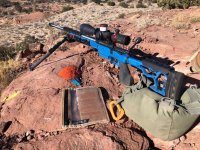 2021 OLD MAN DEC 4.jpg1.4 MB · Views: 271
2021 OLD MAN DEC 4.jpg1.4 MB · Views: 271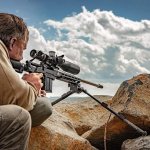 NC 2021 5.jpg188 KB · Views: 269
NC 2021 5.jpg188 KB · Views: 269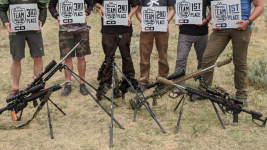 botc rifles.PNG5.5 MB · Views: 265
botc rifles.PNG5.5 MB · Views: 265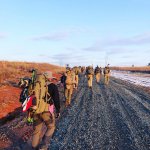 EF777060-BC57-4D5B-A223-F7BB202E61C0.JPG787 KB · Views: 253
EF777060-BC57-4D5B-A223-F7BB202E61C0.JPG787 KB · Views: 253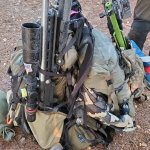 IMG_6235.JPG208.4 KB · Views: 232
IMG_6235.JPG208.4 KB · Views: 232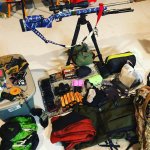 2019 GA GEAR.JPG333 KB · Views: 235
2019 GA GEAR.JPG333 KB · Views: 235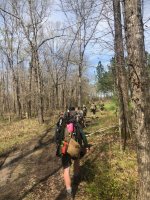 2019 GA WALKING.jpg1.5 MB · Views: 242
2019 GA WALKING.jpg1.5 MB · Views: 242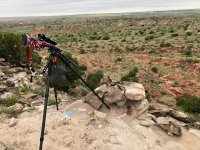 2019 ss 2.jpg1.2 MB · Views: 229
2019 ss 2.jpg1.2 MB · Views: 229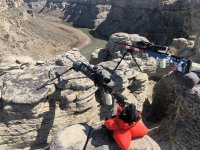 2019 warhorse 1.jpg1.3 MB · Views: 255
2019 warhorse 1.jpg1.3 MB · Views: 255
